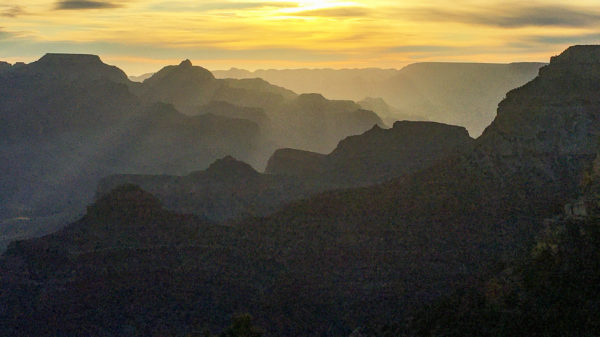
- Details
- By Native News Online Staff
GRAND CANYON, Ariz. — The U.S. Dept. of the Interior, which has jurisdiction over the National Park Service, decided to close the Grand Canyon National Park on Wednesday, April 1, based on the strong recommendation of the U.S. Department of Health and Human Services to help stop the spread of COVID-19 (novel coronavirus).
"The Department of the Interior and the National Park Service will continue to follow the guidance of state and local health officials in making determinations about our operations," Interior Secretary David Bernhardt said. "As soon as we received the letter from the Health and Human Services Director and Chief Health Officer for Coconino County recommending the closure of Grand Canyon National Park, we closed the park."
The Grand Canyon’s East Rim is located near the Navajo Reservation, which has announced a total of 214 confirmed COVID-19 cases. The Navajo Nation has been pressing the National Park Service to close the Grand Canyon for several weeks, hoping to curb tourists from driving onto the Navajo Reservation.
“The Navajo Nation had pleaded with the federal government to deny tourists access to the Grand Canyon to keep the 174 confirmed cases of coronavirus and several deaths among residents from rising,” Navajo Nation President Jonathan Nez said on Wednesday prior to release of another 40 confirmed cases.
“The closure of the park took longer than it should've, but we're glad it's finally closed,” Nez said.
The Havasupai Tribe, which lies outside the boundary and jurisdiction of Grand Canyon National Park, closed its tourist attractions on March 16 and will remain closed until at least April 14.
“The health and safety of the many tourists who visit as well as our tribal members, employees and consultants is very important to us,” Havasupai Tribe Chairwoman Eva Kissoon.
The NPS encourages people to take advantage of the many digital tools already available to explore Grand Canyon National Park, including: The NPS encourages people to take advantage of the many digital tools already available to explore Grand Canyon National Park, including: webcams, virtual tours, photo galleries, mobile app, videos, Flickr, Facebook, Instagram, YouTube, and Twitter.
More Stories Like This
Native News Weekly (August 25, 2024): D.C. BriefsUS Presidents in Their Own Words Concerning American Indians
Native News Weekly (December 14, 2025): D.C. Briefs
Wounded Knee Massacre Site Protection Bill Passes Congress
Two Murdered on Colville Indian Reservation
Help us defend tribal sovereignty.
At Native News Online, our mission is rooted in telling the stories that strengthen sovereignty and uplift Indigenous voices — not just at year’s end, but every single day.
Because of your generosity last year, we were able to keep our reporters on the ground in tribal communities, at national gatherings and in the halls of Congress — covering the issues that matter most to Indian Country: sovereignty, culture, education, health and economic opportunity.
That support sustained us through a tough year in 2025. Now, as we look to the year ahead, we need your help right now to ensure warrior journalism remains strong — reporting that defends tribal sovereignty, amplifies Native truth, and holds power accountable.
 The stakes couldn't be higher. Your support keeps Native voices heard, Native stories told and Native sovereignty defended.
The stakes couldn't be higher. Your support keeps Native voices heard, Native stories told and Native sovereignty defended.
Stand with Warrior Journalism today.
Levi Rickert (Potawatomi), Editor & Publisher

